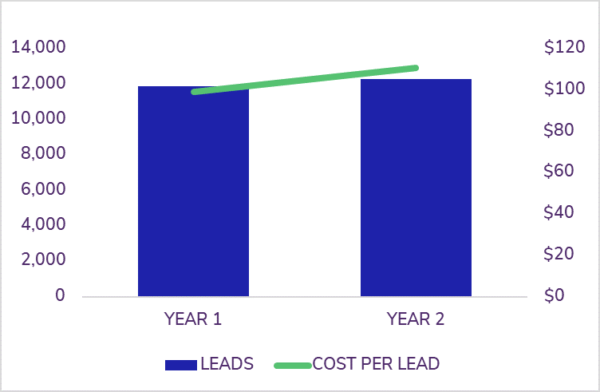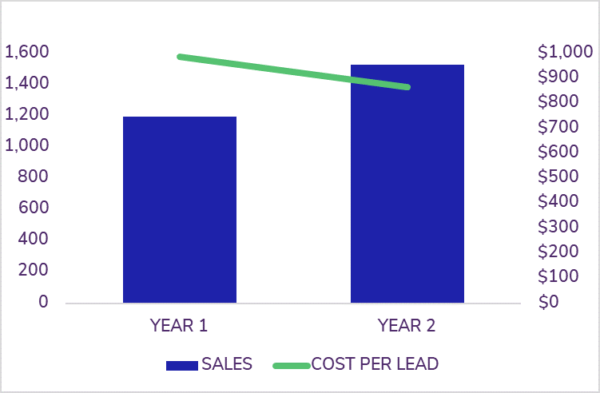One of the big promises of digital marketing is the idea that everything is trackable and measurable – but that doesn’t keep you from tracking and measuring the wrong metrics. A savvy marketer can see exactly what actions users are taking on their website and tie them back to specific spend in real-time. While it sounds simple and clean, reality is often much messier and complicated.
One of the pitfalls that we see companies fall into time and time again is to focus measurement on the metrics that are quick and easy to collect. A good example of this are companies with long sales cycles who measure marketing success solely on number of leads and cost-per-lead (CPL).
While number of leads and CPL are good leading indicators, they are not the whole picture. Ideally, marketing teams should be measured on things such as:
- Return on Ad Spend (ROAS)
- Cost per Sale
- Cost per Appointment
While these take longer to determine and can be more complicated to measure, measuring exclusively on number of leads and CPL can result in distortions that can cause poor decision making and suboptimal long-term results.
Wrong Metrics in Action: An Example
One of our clients sells a service with a 3-month to 18-month sales cycle. Due to data and reporting limitations, they measured digital marketing success on lead volume and CPL. “Get me as many leads as you can at $XX CPL!” was the charge of the digital team.
The resulting marketing efforts were chaotic. Since cost per sale and ROAS were not measured and reported back to the marketing team, the quality of the leads sent to sales varied greatly from month-to-month. This often resulted in the sales team being behind on their numbers.
When that happened, the company would respond by stuffing more leads into the top of the funnel to spur more sales activity. Marketing budgets would explode for a couple of months along with a mandate “get more leads no matter what the cost.” Once sales caught up, scrutiny shifted from lead volume to the sky high budgets and CPLs. Spending was chopped until the next sales emergency. Wash. Rinse. Repeat.
These yo-yo marketing efforts led to a spending pattern that looked something like this:

Eventually, the organization realized that this was not a “healthy” pattern and they asked us for help.
- What we did: Worked with the client to implement tracking that matched keywords and ads to sales
What happened: We gained insight into the keywords, geographies, channels, and ads that drove revenue - What we did: Reallocated spend toward the activities that drove leads that resulted in sales
What happened: Some activities saw their budgets double, others experienced deep cuts - What we did: Set acquisition and cost goals on a channel-by-channel and keyword-type-by-keyword-type basis
What happened: Acquisition cost goals for some channels dropped by 50% or more - What we did: Rebuilt channels for growth
What happened: See below…
Better Results Measured by Better Metrics
The outcome of our activities, if viewed through the client’s “old paradigm” of lead volume and cost-per-lead, seems to have been a rousing failure. The number of leads increased by 3.5%, but cost per lead increased by 12.6%. Based on these metrics alone, performance would be on the very low side of average.

However, if you look at the metrics that matter to the client’s bottom line, our efforts were extremely successful. The number of sales rose by 32%, and the cost per sale decreased by 12%.

Simply stated, by getting more insight into what was delivering quality leads and changing the examined metrics, the marketing team was able to deliver much higher quality leads. Leads that the sales team was much more likely to close into customers instead of just languishing in the funnel.
What are you measuring as the standard for success?

